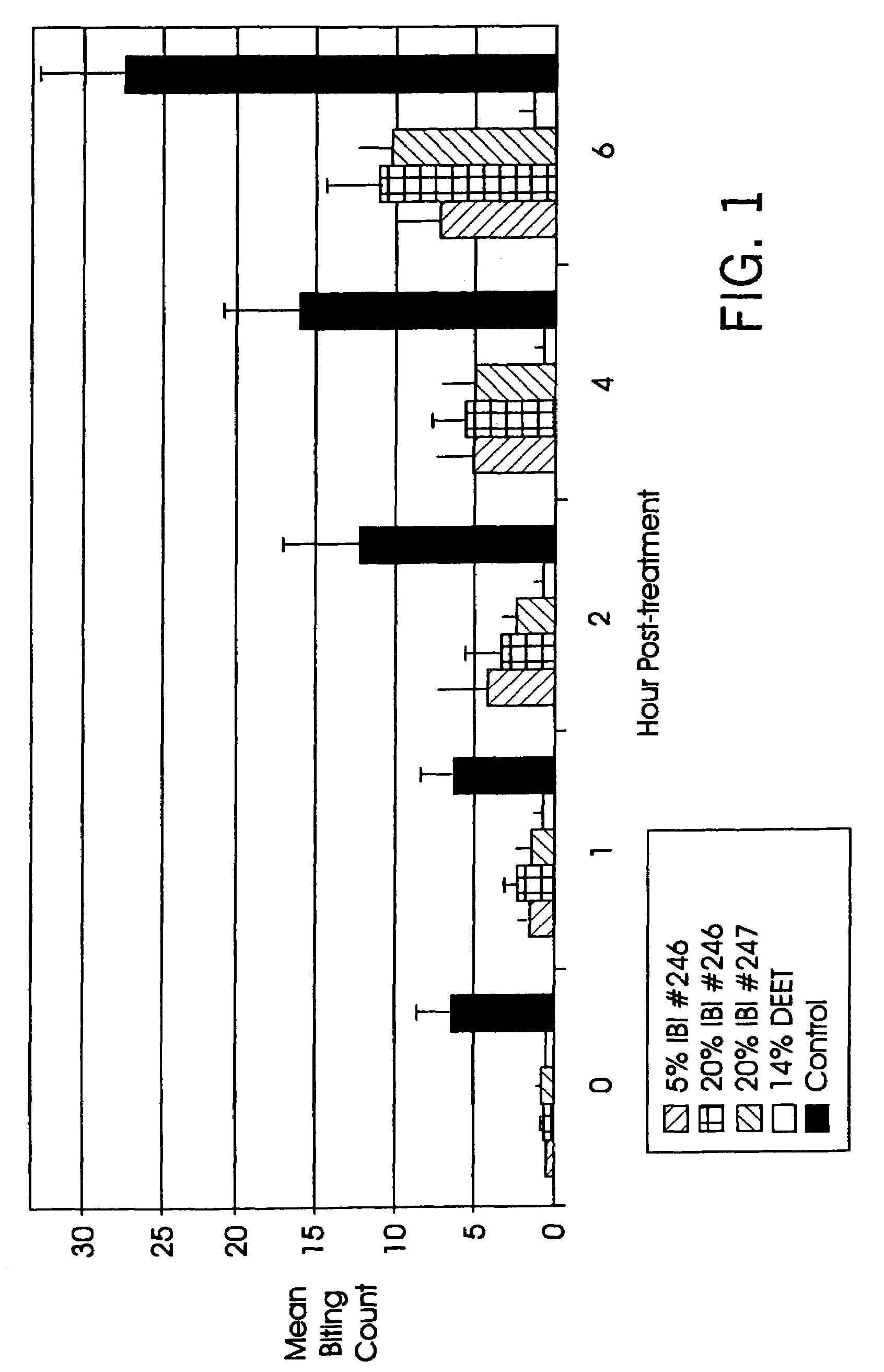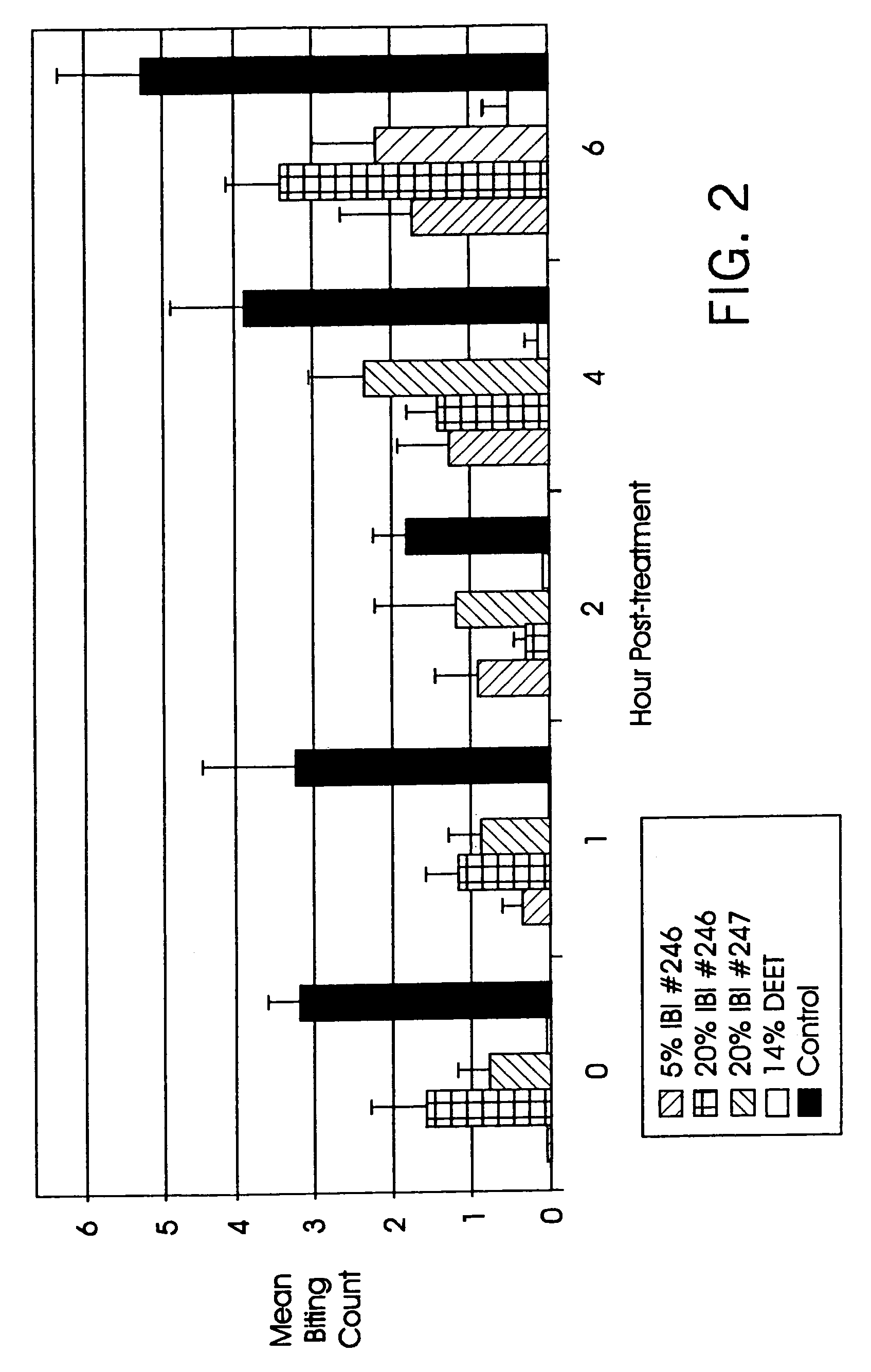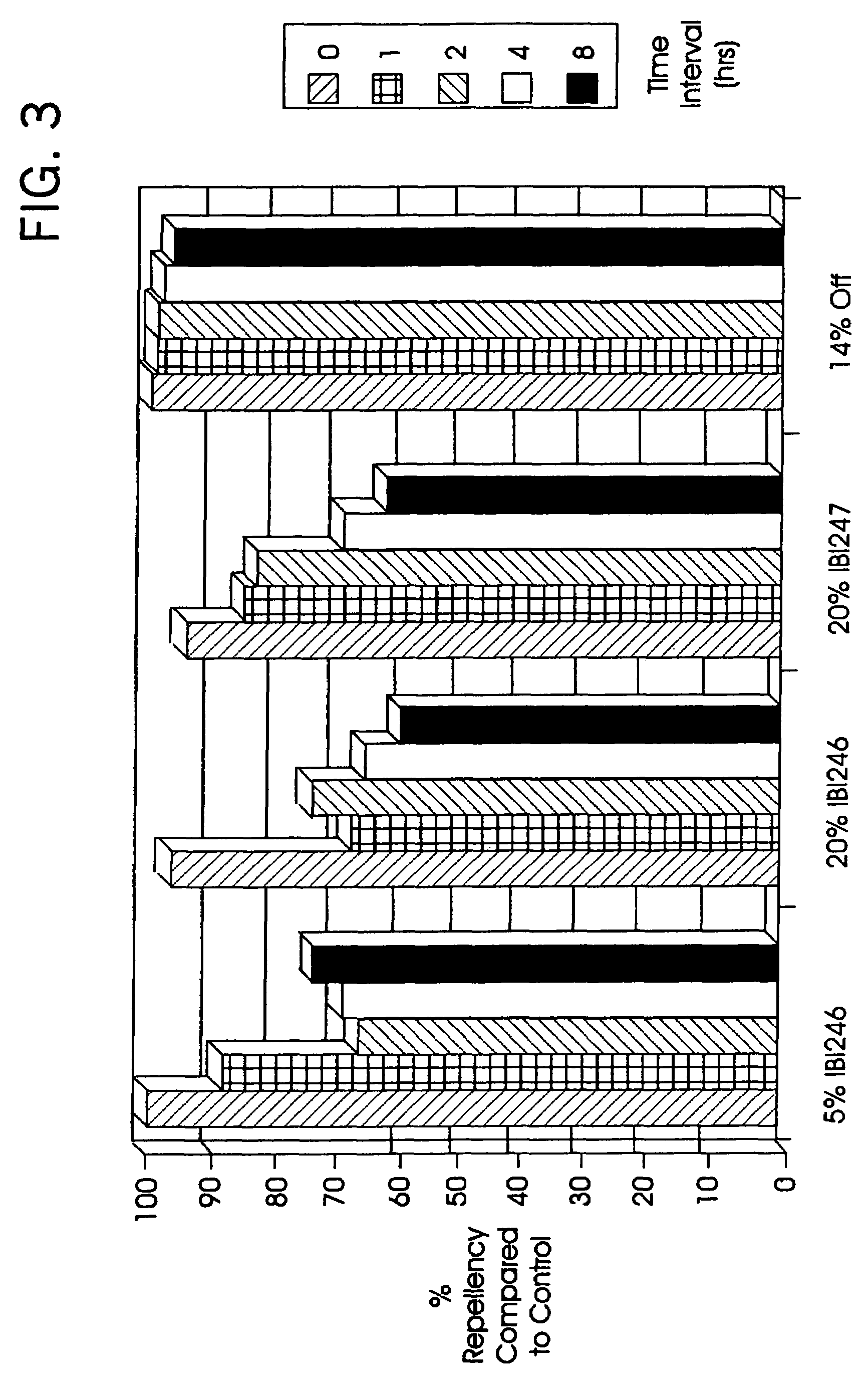Method of repelling insects
- Summary
- Abstract
- Description
- Claims
- Application Information
AI Technical Summary
Benefits of technology
Problems solved by technology
Method used
Image
Examples
example 1
Mosquito Repellant
[0040]Untreated cheese cloth was wrapped around the right hand of a human subject and inserted into a cage of adult tiger mosquitoes (approximately 50 in the cage). The insects were immediately attracted to the subject's hand. The tiger mosquitoes were observed to be actively probing and biting the subject's hand through the cheese cloth within seconds. The subject was required to shake his hand violently to remove the insects from the cheese cloth when removing his hand from the cage, to avoid transferring the insects from the cage to the outside.
[0041]The same cheese cloth was then treated to saturation with a 1% by volume solution of 2-tridecanone / 2-undecanone (approximately 50% by volume of each) in ethanol. The cloth was allowed to air dry to remove the ethanol.
[0042]After treatment as described above the cheese cloth was again wrapped around the subject's hand and placed in the same cage. Fewer (by 1 / 10) mosquitoes landed on the cheese cloth. This treatment w...
example 2
Tick Repellant
[0043]A volume of 800 microliters of a 1% by volume solution of 2-undecanone and 2-tridecanone mix (50% each) in ethanol was added to one-half of a coarse 9 centimeter filter paper disc placed in a plastic petri plate of corresponding size and allowed to air dry. An exact control half filter paper disc was treated in a separate container with 800 microliters of ethanol at the same time. The control was allowed to air dry until no ethanol could be detected by smell approximately 2 centimeters from the surface of the filter paper. The treatment and ethanol control was then transferred to a sterile plastic petri plate containing 10 ticks, Ornithodorus parkeri. The control and treatment paper were positioned so that they covered most of the bottom of the plate but did not touch in the middle; they were separated by a distance of about 0.25 cm. The ticks were randomly distributed around the plate when the filter paper was introduced. Essentially 100% of the ticks were found...
example 3
Mosquito Repellency of Undecanone
[0044]Forty milliliters of a 2.5 percent solution of undecanone in absolute ethanol was added to a gauze glove (20×15 centimeters) in a 250 milliliter beaker. After soaking for 1 minute, the glove was laid onto aluminum foil in a fume hood for 13 minutes and then suspended by one end from the sash of the fume hood for 3 minutes. The ethanol appeared to be completely evaporated after this treatment as determined by touch. Upon touch, the glove did not feel wet or cool. The same treatment was used without undecanone as a control. After the same drying steps, no odor of ethanol could be detected by smell. The control glove was the same physical dimensions and made from the same batch of material as the treatment. The control experiments including wetting and drying of the glove was conducted prior to the undecanone treatment.
[0045]Approximately 100 adult male and female mosquitoes (Aedes taeniorhynchus) (exact sex ratio not determined) were placed in a ...
PUM
| Property | Measurement | Unit |
|---|---|---|
| Fraction | aaaaa | aaaaa |
| Fraction | aaaaa | aaaaa |
| Fraction | aaaaa | aaaaa |
Abstract
Description
Claims
Application Information
 Login to View More
Login to View More - R&D
- Intellectual Property
- Life Sciences
- Materials
- Tech Scout
- Unparalleled Data Quality
- Higher Quality Content
- 60% Fewer Hallucinations
Browse by: Latest US Patents, China's latest patents, Technical Efficacy Thesaurus, Application Domain, Technology Topic, Popular Technical Reports.
© 2025 PatSnap. All rights reserved.Legal|Privacy policy|Modern Slavery Act Transparency Statement|Sitemap|About US| Contact US: help@patsnap.com



